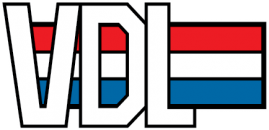Shell & tube heat exchangers
Use and application
Owing to the different designs, there are various possibilities of application e.g.:
- Water/water heat exchanger.
- Pre heater for oil, water or other heat transfer media.
- Exhaust or flue gas heat exchanger.
- Oil cooler for lubricating oil, transformer oil or turbine oil.
- Pressure gas cooler with plain or finned tubes.
- Heat exchanger for chemical processes.
- Heat exchanger for food engineering (conforming to FDA).
For media with high vicosity, turbulators can be used to increase the performance.
In addition to this, the size of the outside surface can be increased by using finned tubes or lamellas.
Construction and design
The heat exchangers are built in the most suitable manner to meet the conditions of use and any specification with:
- Packed floating tube sheet (single or double sealing).
- Floating head (inside or outside).
- U-tube bundle.
- Fixed tube sheets and shellside expansion bellow.
- Fixed tube sheets in a membrane tube sheet design.
- Fixed tube sheets in heavier design without expansion bellow.
Tested computer programs (e.g. Aspen Tech / HTFS) are used for thermodynamic design and strength calculation.
The heat exchangers are built in modern production plants using advanced manufactoring techniques.
Selection of material
Materials are selected according to operating conditions and analysis of operating media.
The following materials are standard for the tubes:
- Steel or stainless steel.
- Copper, brass or complex brass.
- Cupro nickel.
- Hastelloy.
- Titanium.
The tubes are rolled in or welded into the tube plates.
Process engineering construction
The construction meets the standards of pressure guidelines as well
as PED, API, ASME or TEMA.
Test certificates are issued by TÜV or other classification authorities if required by the customer.
Upon customers request fully equiped with:
- Instrumentation and monitoring devices for pressure, temperatur etc.
- Leakage detection and safety equipment
- Standstill heating
